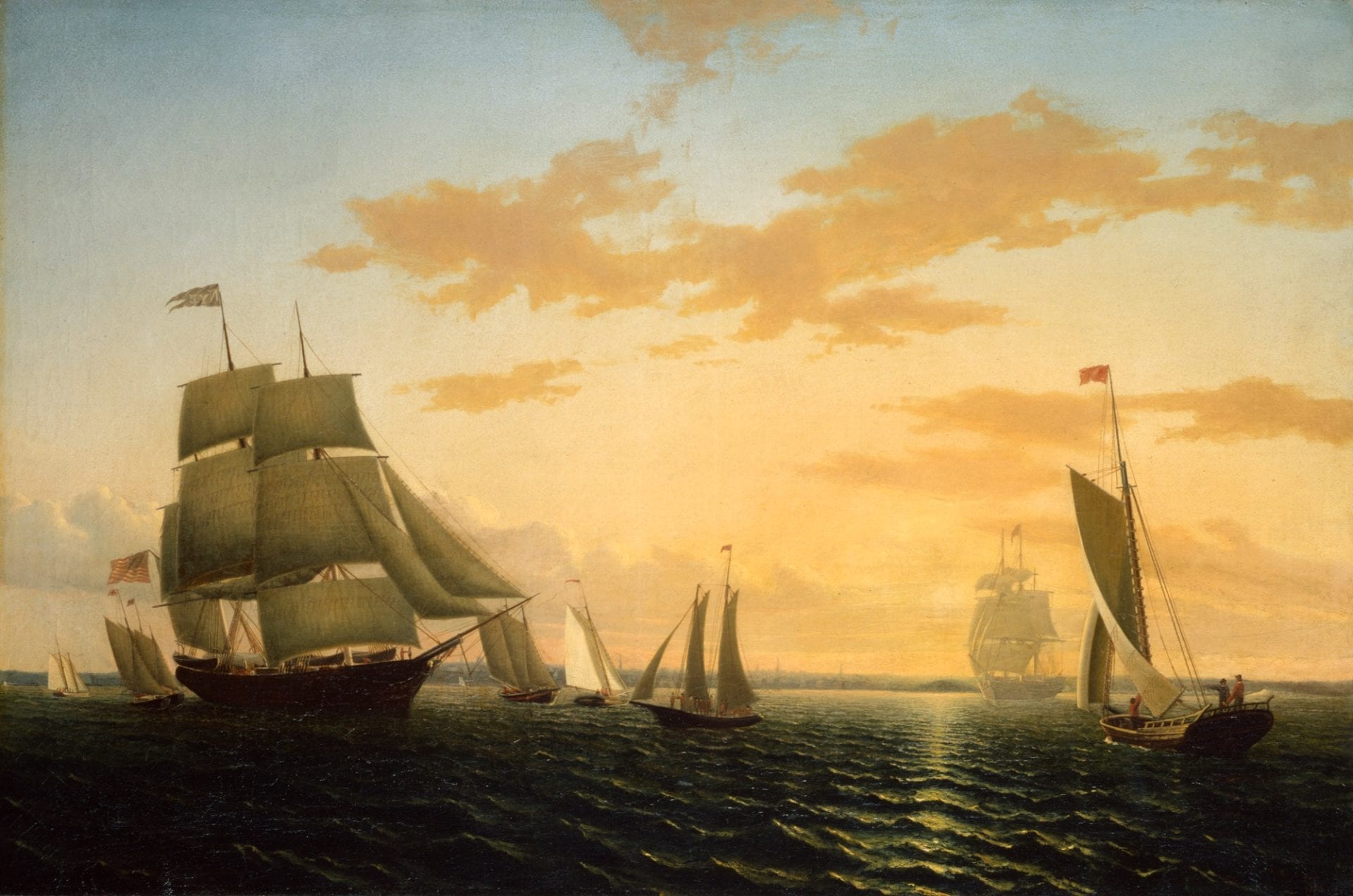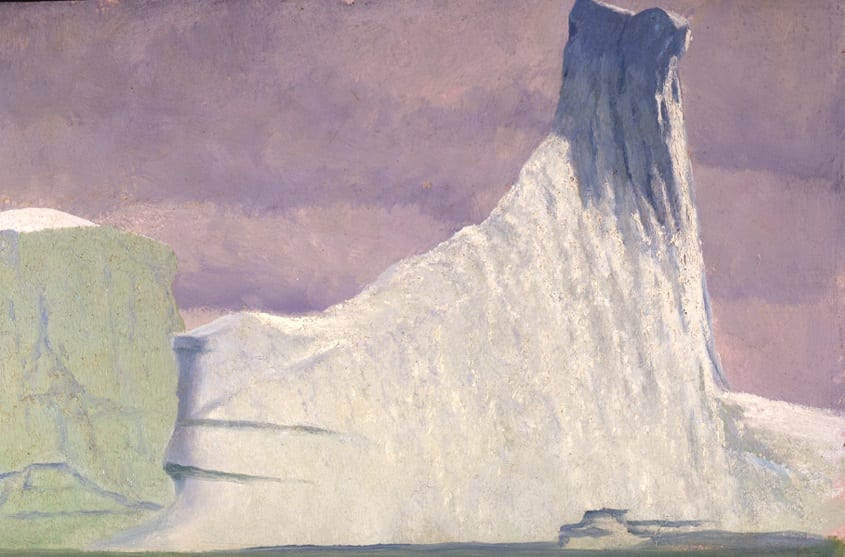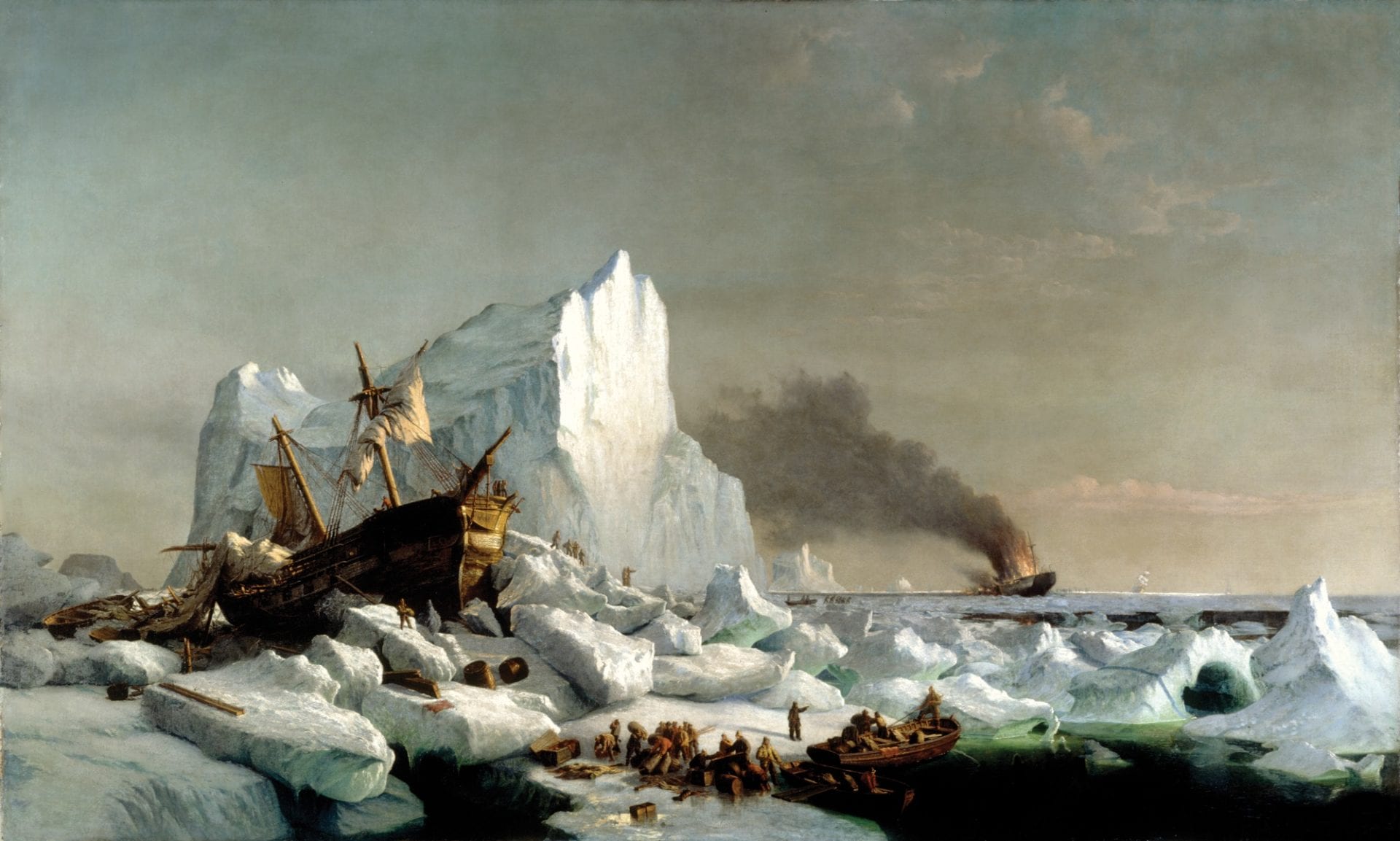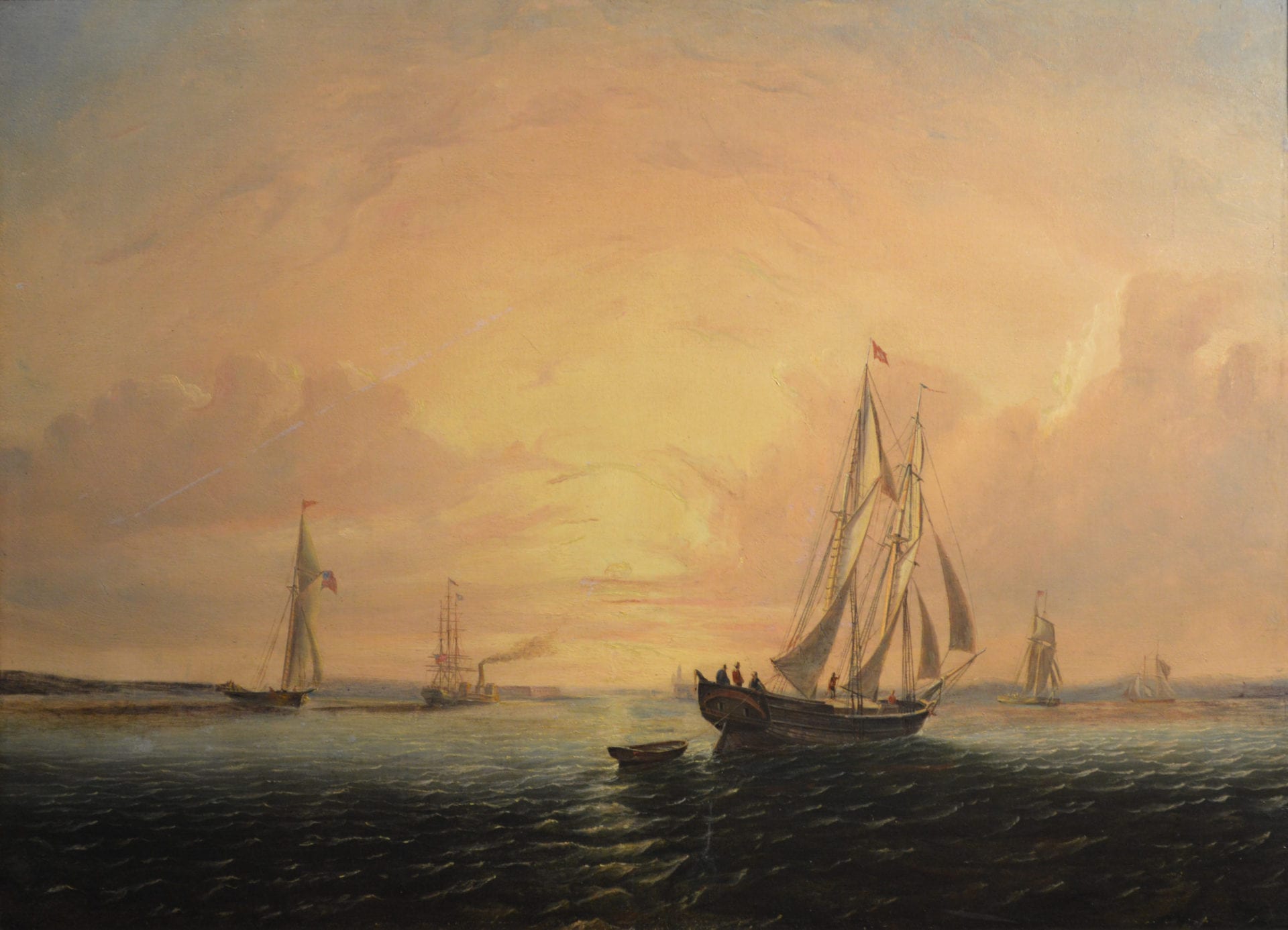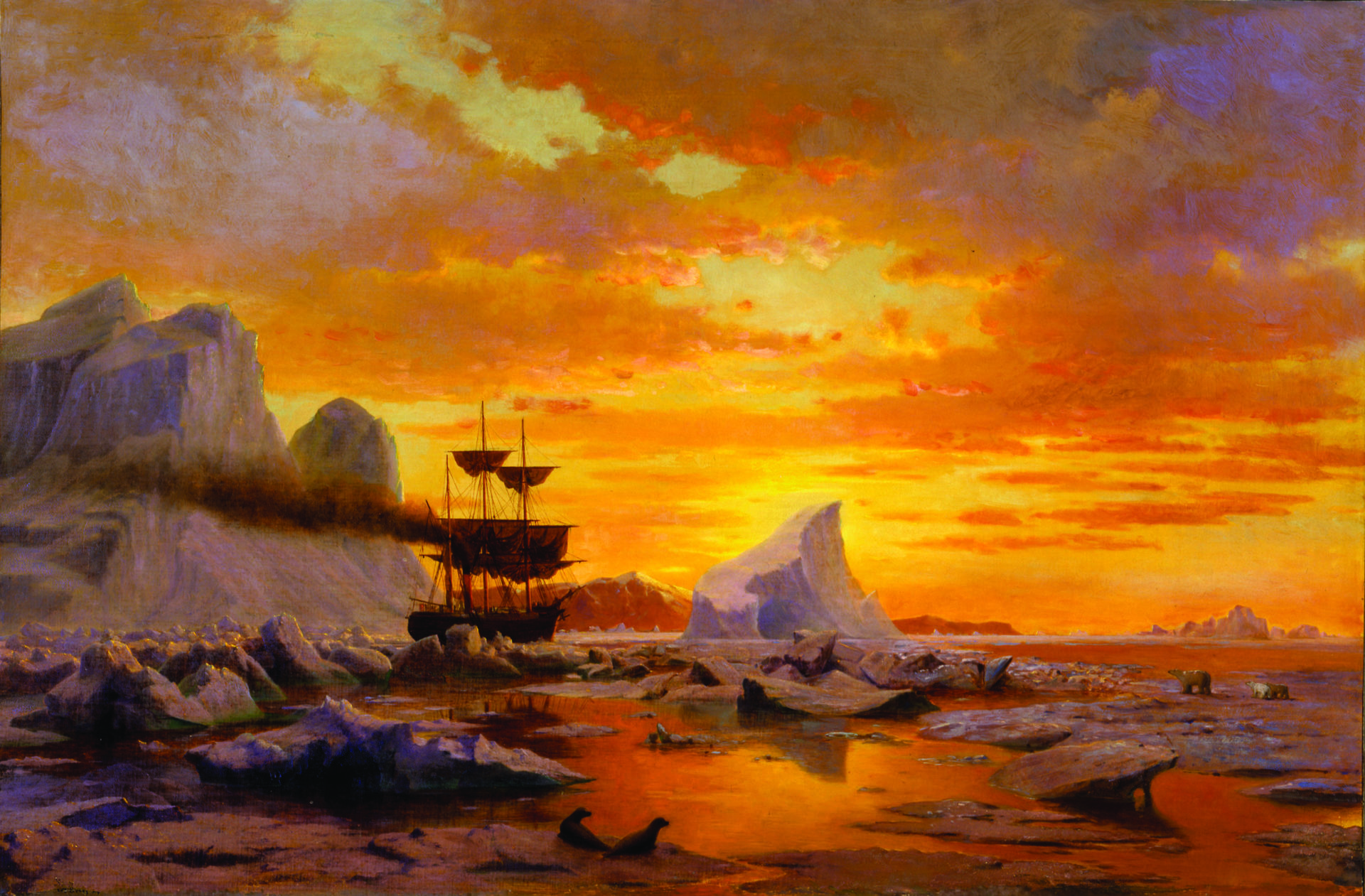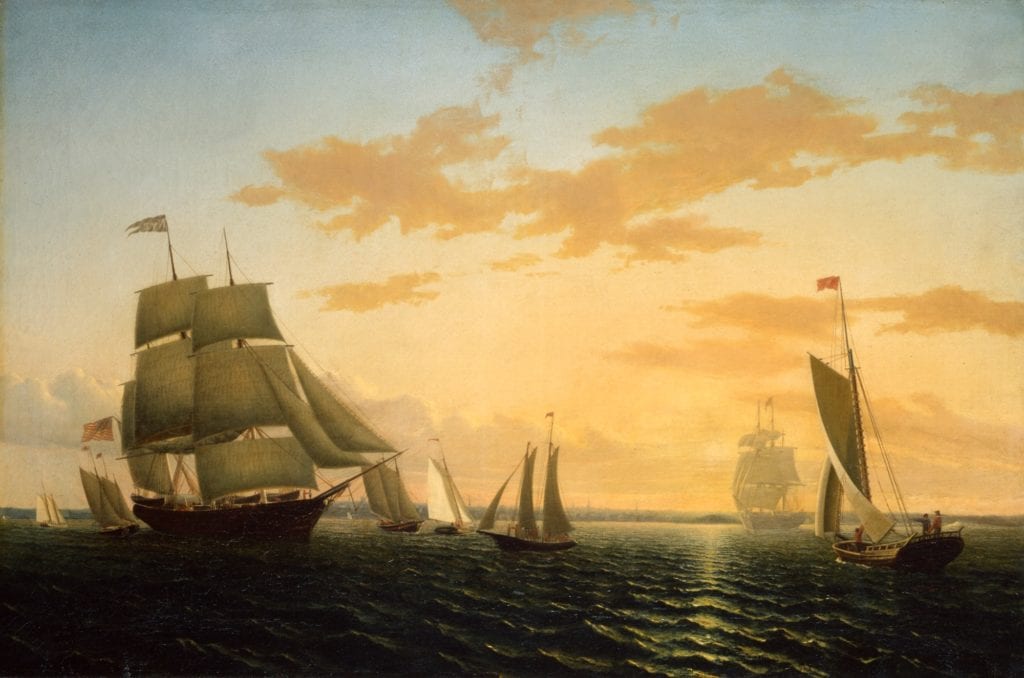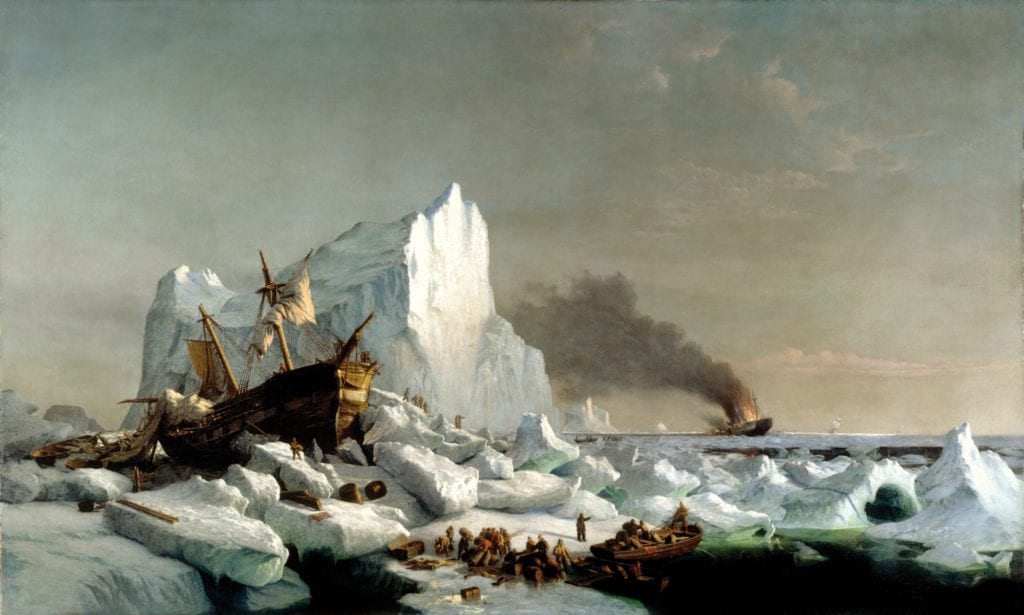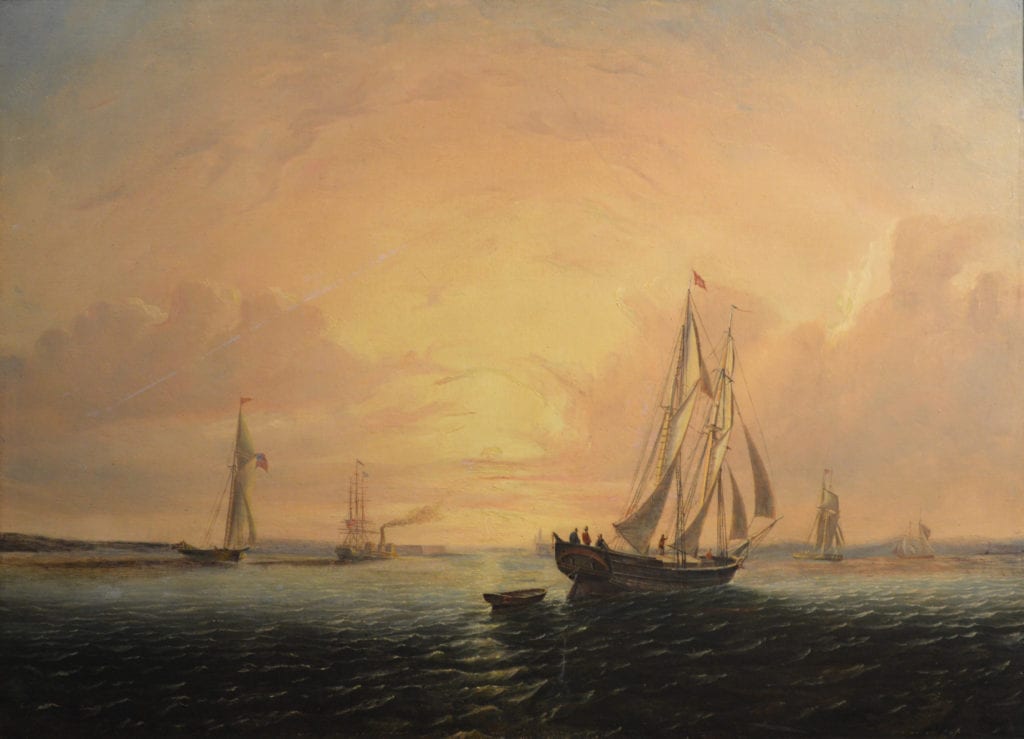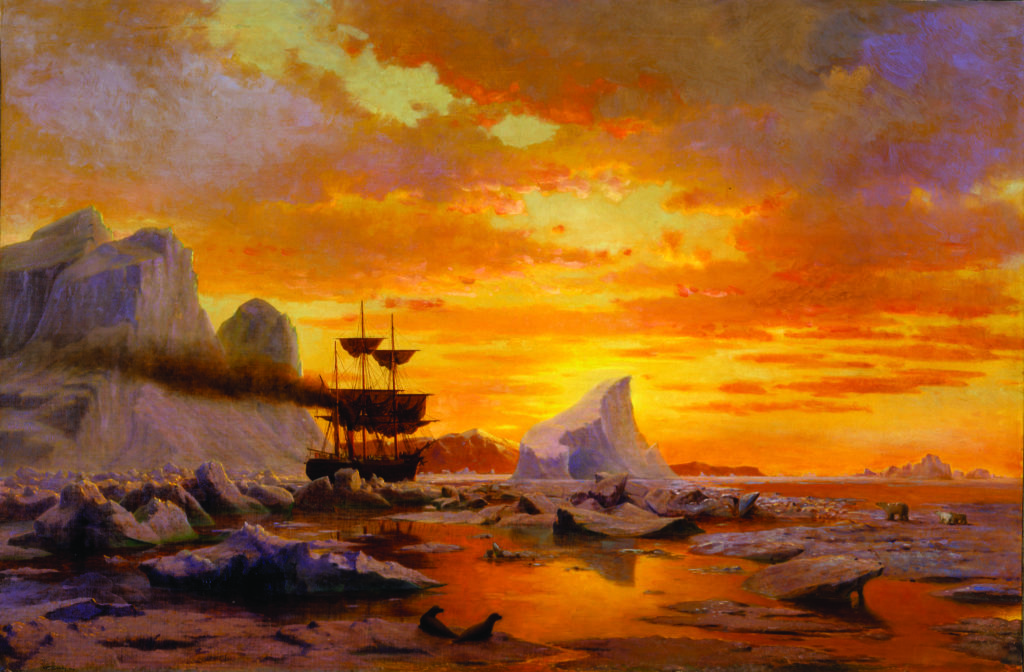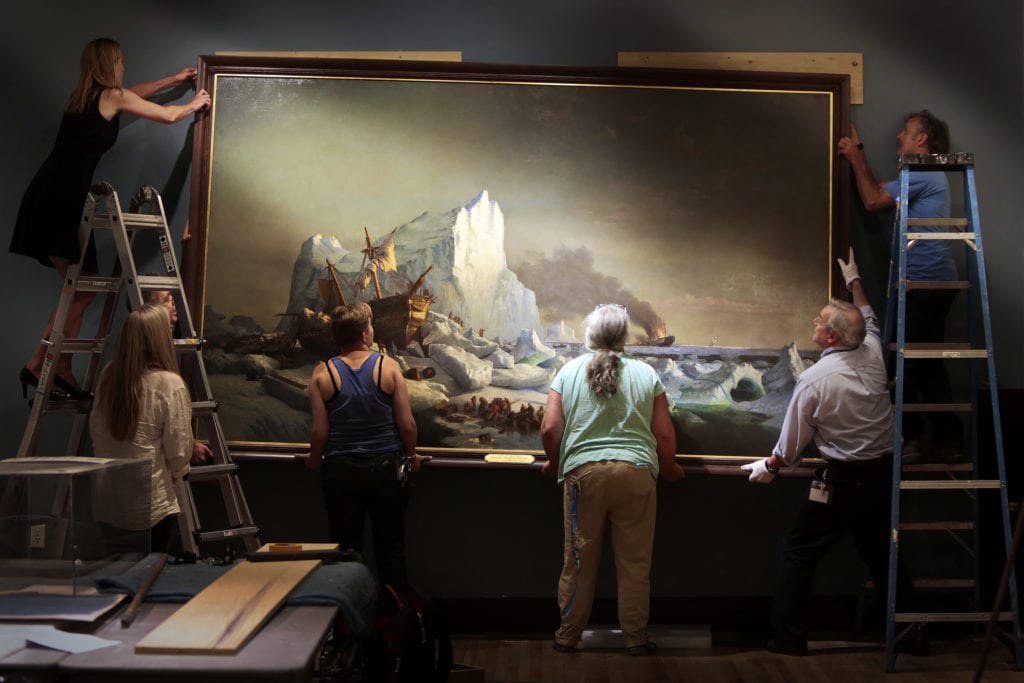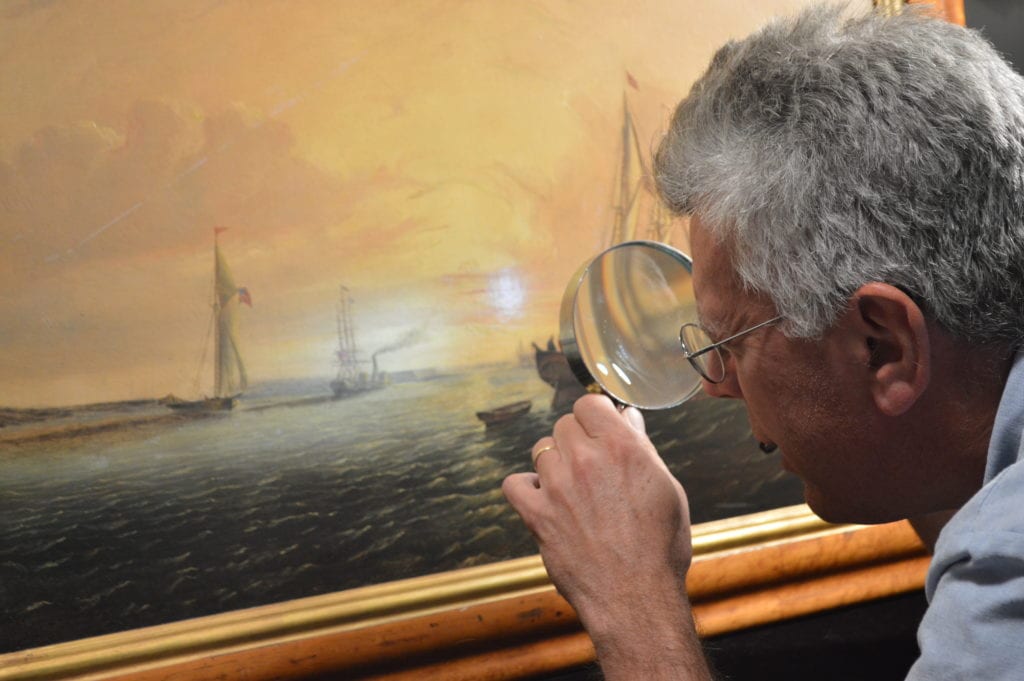Inner Light: The World of William Bradford
Wattles Family Gallery and Braitmayer Family Gallery
Opened: July 1, 2016
Closed: May 31, 2017

Available for purchase at the Museum store The White Whale
Highlighting the Whaling Museum’s extensive collection of William Bradford's (1823-1892) oil paintings, watercolors and sketchbooks, Inner Light was a retrospective exhibition of this important regional artist’s life, career, connections, and influences.
A New Bedford native son, Bradford’s affiliations with some of the most prominent artists, collectors, and thinkers of his time placed him in an influential role at the center of culture and fine art in the mid-19th century. A highlight of the exhibition was the debut of Bradford’s oil painting Schooner Ellenor, Boston, a recent gift from Herbert and Patricia Pratt. The painting is an important addition to our Bradford Collection, which is one of the world’s largest. Newly conserved objects from the collection were also on view.
Inner Light explored Bradford’s connections and influences within 19th century America. His family owned the whaling ship Acushnet, which carried Herman Melville on his inspirational whaling voyage. Bradford studied with Albert van Beest, who shared Bradford’s studio in Fairhaven and brought the Dutch marine tradition to New Bedford. Bradford was also influenced by the work of Fitz Henry Lane, one of America’s most important Luminist painters. Work by these artists was characterized by effects of light in landscapes, poetic and often sublime atmosphere, and aerial perspective. As a teacher, he and van Beest gave instruction to a young R. Swain Gifford and later inspired the studies of Lemuel Eldred. Bradford also had a close friendship with Albert Bierstadt and his painting New Bedford Harbor at Sunset was included in the New Bedford Art Exhibition organized by Bierstadt in 1858. Bradford painted alongside his friend in an adjoining studio space in New York City and later followed Bierstadt to Yosemite Valley.
Other connections include Transcendentalist Daniel Ricketson and poet Henry David Thoreau who visited Bradford’s studio and the American poet John Greenleaf Whittier who dedicated poems to the artist, lines of which are inscribed on Bradford’s grave in New Bedford. Bradford was even commissioned by the Royal family to produce the painting The Panther in Melville Bay for Queen Victoria after the Queen saw Sealers Crushed in Ice on display in London. Bradford’s “great paintings,” such as the Museum’s Sealers Crushed in Ice, belonged to a new tradition forged in the mid-19th century age of spectacle, when cycloramas, panoramas and World’s Fairs vied to entertain audiences with the wonders of man’s innovations, adventure and nature.
Like many others of his time, Bradford was an artist-explorer. He made six trips to the Arctic between 1861 and 1869 and ventured to California and the great West on the heels of Bierstadt. Other artists of this genre included Frederic Church, who traveled to South America and the Arctic, and Martin Johnson Heade, who went to Brazil. These efforts looked towards an “alternative past” that glorified nature in a pre-industrialized and almost exclusively American experience. Their empirical realism and wordless dialogue with nature were the hallmarks of luminism.
An exhibition at the Museum organized by John Wilmerding, in 1969, was instrumental in bringing attention to William Bradford’s work and career. This exhibition traveled to the DeCordova Museum and included 53 oils and 33 in other media drawn from all phases of Bradford’s career. William Bradford: Sailing Ships and Arctic Seas, curated by Director Emeritus Dick Kugler, celebrated the centennial of the Old Dartmouth Historical Society in 2003. In 2013, the Arctic Regions exhibition focused on the Arctic paintings and photographs by the artist, curated by Michael Lapides.
Inner Light included Bradford works from the Museum’s collections along with works by Bierstadt, Eldred, Gifford and others who were integral parts of his story. An accompanying exhibition of important manuscripts, sketchbooks, and works on paper was also on display in the Museum’s Grimshaw-Gudewicz Reading Room.
Inner light ran concurrently with the New Bedford Art Museum’s exhibition Bierstadt: Nature & National Identity. The Bierstadt exhibition included several artifacts from the New Bedford Whaling Museum collection.
